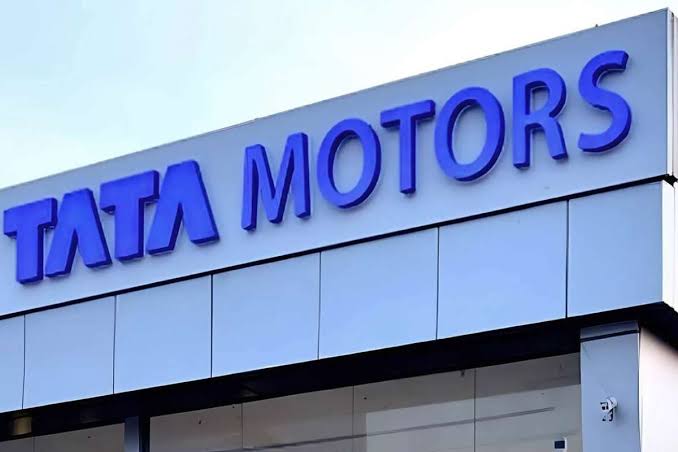Tata Motors, a key player in India’s automotive sector, experienced a challenging June 2025, recording a noticeable dip in its overall sales across both passenger and commercial vehicle segments. While some models held their ground, the month highlighted broader market pressures and intensifying competition.
Overall Sales: A Clear Downturn
In June 2025, Tata Motors reported 37,083 domestic passenger vehicle dispatches. This marks a significant 15% year-on-year (YoY) decline compared to the 43,527 units sold in June 2024. The month-on-month (MoM) performance also saw an 11% drop from May 2025’s 41,557 units. This positioned Tata Motors fourth among manufacturers in terms of overall sales, with a slight reduction in market share.
The commercial vehicle division also faced headwinds, with Tata Commercial Vehicles seeing a 5% YoY decline in total sales, dispatching and exporting 30,238 units in June 2025, down from 31,980 units in June 2024.
Passenger Vehicle Performance: A Mixed Bag
A closer look at individual passenger vehicle models reveals varied results:
* Nexon Leads, but Momentum Slows: The popular Nexon remained Tata’s top seller with 11,602 units in June. However, even this segment leader experienced a 4% YoY decline and an 11% MoM drop, signaling a slight cooling of demand.
* Punch Sees a Sharp Fall: The Punch, a consistent volume driver, recorded 10,446 units. This represents a steep 43% YoY drop and a 20% MoM decline, suggesting increased pressure in the compact SUV/micro-SUV segment.
* Tiago Shines with Growth: A bright spot, the Tiago hatchback actually improved its numbers, registering a 17% YoY rise with 6,032 units sold. While slightly down from May, its annual growth is a positive sign.
* Altroz Holds Steady: The Altroz premium hatchback showed consistency with 3,974 units, a marginal 1% YoY increase.
* Curvv’s Initial Dip: The recently launched Curvv posted 2,060 units in June. Its figures were lower than May’s, showing a 33% MoM dip after its initial launch surge.
* Harrier and Safari Struggle: The Harrier mid-size SUV, despite a 41% MoM gain, saw its YoY tally slip by 7% to 1,259 units. The Safari SUV followed a similar downward trend, declining by 34% YoY and 17% MoM with 922 units sold.
* Tigor Under Pressure: The Tigor compact sedan faced challenges on both fronts, with only 788 units dispatched in June, marking a 43% annual drop and a 27% decline over May.
Commercial Vehicles: Domestic Challenges, Export Gains
The commercial vehicle segment presented a nuanced picture. While most domestic categories saw sales fall, passenger carriers showed marginal growth. Notably, international business was a strong performer, with exports surging by 70% YoY to 2,302 units. However, domestic sales of Heavy Commercial Vehicles (HCVs) and Medium & Heavy Commercial Vehicles (MH&ICVs) experienced significant declines.
EV Performance: Growth Driver Faces Market Share Drop
Tata Motors continues to lead the electric passenger vehicle (e-PV) market, but its market share has noticeably decreased. Cumulative January-June 2025 e-PV sales stood at 28,471 units, representing a 14% YoY decline. This caused its market share to fall from 68% in H1 CY2024 to 38% in H1 CY2025. This indicates rising competition in the EV sector. However, the recently launched Harrier.ev, with over 10,000 bookings, is expected to boost Tata Motors’ EV sales as deliveries begin in the coming months.
Factors Behind the Performance
Several elements likely contributed to Tata Motors’ June performance:
* Overall Market Slowdown: The broader Indian auto industry experienced a slowdown in June 2025, with total passenger vehicle wholesales dipping by 6.4% YoY and 9.1% MoM. Factors like monsoons, model changes, and a fatigued retail channel were cited.
* Intensified Competition: The market is witnessing aggressive moves from rivals like Mahindra, which continues its strong growth, and JSW MG Motor India, which has doubled its EV market share.
* Customer Anticipation: There’s speculation that some customers might be delaying purchases in anticipation of Tata Motors’ upcoming launches, particularly in the EV segment.
* Service and After-Sales Concerns: Some industry observers have highlighted the need for Tata Motors to enhance its servicing experience and address costs to improve customer satisfaction.
Looking Ahead: Strategic Initiatives
Recognizing the market dynamics, Tata Motors is actively working to protect its position and regain market share. The company has announced a massive ₹35,000 crore investment for a new product offensive. This strategy focuses on expanding into underserved segments like urban compact EVs, lifestyle SUVs, and premium electric SUVs, while also refreshing its core Internal Combustion Engine (ICE) portfolio.
Although June 2025 presented a challenging period for Tata Motors, the company’s long-term strategy, particularly its commitment to electric mobility and its robust upcoming product pipeline, signals a determined effort to navigate the evolving automotive landscape and strengthen its standing in the Indian market. The performance in the coming months, especially with the ramp-up of Harrier.ev deliveries and other strategic initiatives, will be crucial in shaping Tata Motors’ trajectory for the remainder of FY26.
